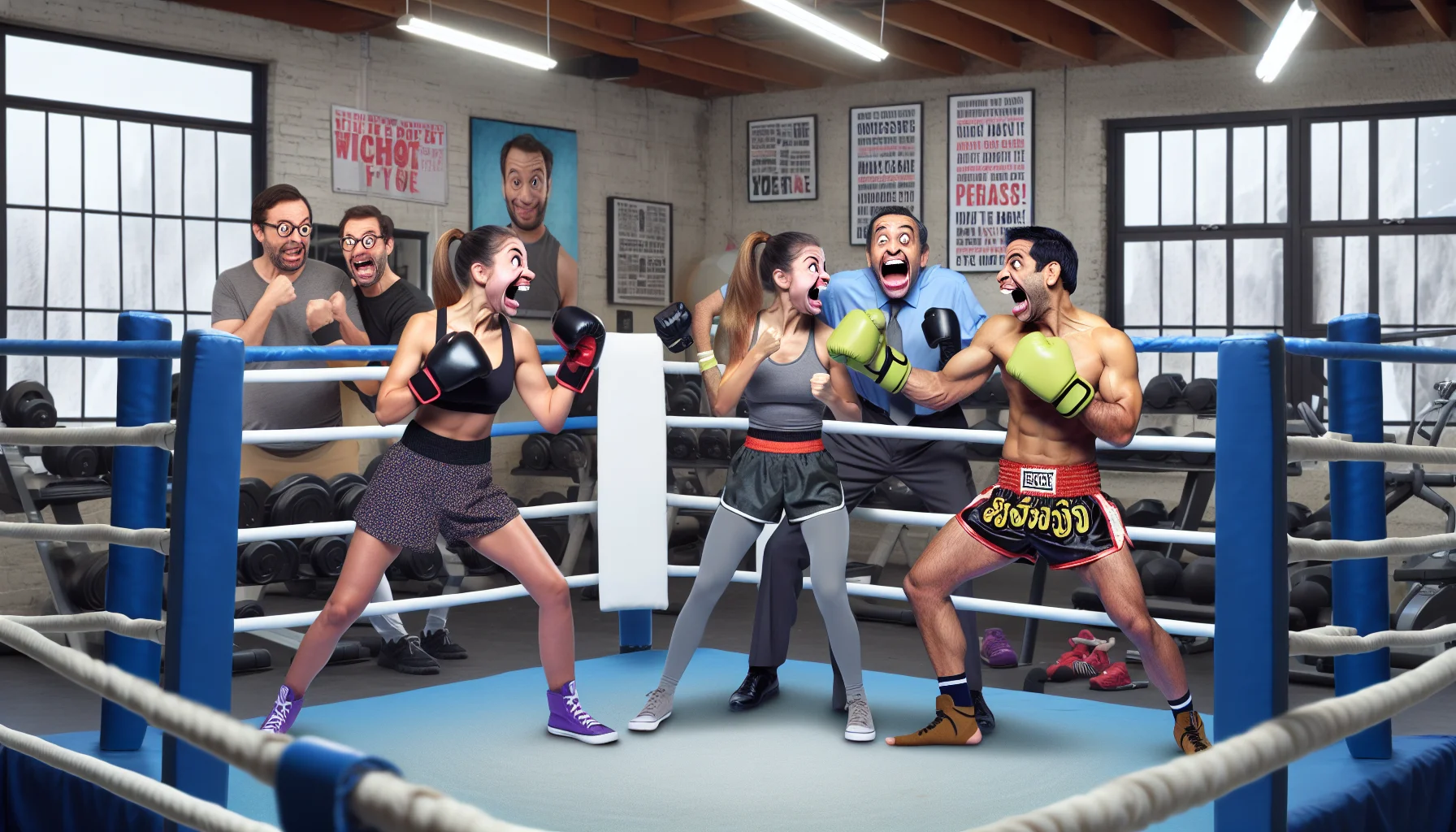Kickboxing vs muay thai Quiz
Test Your Knowledge
Question of
Kickboxing vs Muay Thai: An Overview
Kickboxing and Muay Thai are both popular stand-up striking martial arts, but they have distinct differences that set them apart. Kickboxing, with its origins rooted in Japan and the United States, has evolved into a global sport combining elements from various traditional martial arts, including karate and boxing. It emphasizes punches, kicks, and footwork, making it a dynamic and fast-paced sport. On the other hand, Muay Thai, known as the "Art of Eight Limbs," originates from Thailand and is renowned for its comprehensive use of the body for striking. It incorporates punches, kicks, elbows, and knee strikes, offering a more diverse range of techniques compared to kickboxing. Muay Thai also includes clinching, which adds a significant grappling component to the sport. While kickboxing enjoys widespread popularity in many countries, Muay Thai holds a deep cultural significance in Thailand and has gained international recognition for its effectiveness, particularly in mixed martial arts (MMA) competitions. Both martial arts have a strong global following, but their unique characteristics cater to different preferences and fighting styles.
The Techniques Compared
-
Kickboxing:
- Punches: Utilizes jabs, crosses, hooks, and uppercuts.
- Kicks: Focuses on high kicks, low kicks, and spinning kicks.
- Movement: Emphasizes footwork and mobility for offensive and defensive strategies.
- Combinations: Kickboxing often involves rapid sequences of punches and kicks to overwhelm the opponent.
-
Muay Thai:
- The Art of Eight Limbs: Uses fists, elbows, knees, and shins for striking, making it distinct from kickboxing.
- Clinch: A form of stand-up grappling used to control the opponent's posture or to land strikes up close.
- Elbows and Knees: Known for its devastating elbow and knee strikes, which are less common in kickboxing.
- Leg Kicks: While both martial arts utilize leg kicks, Muay Thai is particularly known for its powerful low leg kicks aimed at debilitating the opponent's mobility.
Training Regimen and Fitness Benefits
Kickboxing and Muay Thai are both popular striking-based martial arts, but they differ significantly in their training regimens. Kickboxing focuses primarily on punches, kicks, and footwork, making it a high-paced, cardio-intensive workout. It emphasizes agility, speed, and combinations. Muay Thai, known as the "Art of Eight Limbs," incorporates punches, kicks, elbows, and knee strikes, offering a more comprehensive full-body workout. Training in Muay Thai often involves clinch work and more emphasis on power and endurance, making it physically demanding in different ways compared to kickboxing.
Fitness Benefits of Kickboxing:
- Improves cardiovascular health
- Enhances agility and coordination
- Increases muscle tone and strength
- Boosts endurance and stamina
- Helps with weight loss and fat reduction
Fitness Benefits of Muay Thai:
- Enhances full-body strength and conditioning
- Improves cardiovascular endurance
- Increases flexibility and mobility
- Develops core strength and stability
- Boosts mental toughness and discipline
Equipment and Gear
For those looking to practice kickboxing and Muay Thai, having the right equipment and gear is crucial. While there are many similarities in the gear used for both sports, there are also some distinct differences. Below is a list of necessary equipment and gear for each.
Kickboxing Equipment and Gear:
- Gloves: Boxing gloves are essential for protecting your hands.
- Hand Wraps: To support and protect your wrists and hands.
- Headgear: For sparring sessions to protect your head.
- Shin Guards: Optional depending on whether low kicks are practiced.
- Mouthguard: To protect your teeth and jaw.
- Footwear: Specific kickboxing shoes or barefoot, depending on the style and training environment.
Muay Thai Equipment and Gear:
- Gloves: Similar to kickboxing, but often heavier to accommodate the sport's intensity.
- Hand Wraps: For wrist and hand protection.
- Headgear: Recommended for sparring to protect the head.
- Shin Guards: Essential for protecting shins during leg kicks.
- Mouthguard: To protect your teeth and jaw.
- Elbow Pads: For sparring, to protect both the user and their partner.
- Knee Pads: Also for sparring, to protect knees during clinch work and knee strikes.
- Ankle Support: To provide additional support during footwork and kicks.
- Footwear: Typically, Muay Thai is practiced barefoot.
Choosing the Right Martial Art for You
Deciding between kickboxing and Muay Thai hinges on your specific fitness goals and personal interests. If you're looking for a high-energy workout that emphasizes cardio and agility, kickboxing might be the perfect fit. It's known for its fast-paced nature and can be a fun way to improve your fitness levels while learning striking techniques. On the other hand, Muay Thai, often referred to as "The Art of Eight Limbs," offers a more comprehensive combat sport experience, utilizing punches, kicks, elbows, and knee strikes. It's ideal for those interested in a rigorous full-body workout that not only enhances physical strength but also mental discipline. Consider what you're hoping to achieve and which aspects of martial arts training excite you the most to make the best choice for your journey.
Kickboxing vs Muay Thai: The Verdict
| Factor | Kickboxing | Muay Thai |
|---|---|---|
| Difficulty Level | Intermediate | High |
| Fitness Benefits | High cardiovascular fitness, muscle toning | Exceptional cardiovascular conditioning, strength building |
| Suitability for Self-Defense | Good | Excellent |
| Technique Focus | Punches, kicks, knee strikes (limited) | Punches, kicks, knee and elbow strikes, clinching |
| Popularity | Widely popular worldwide | Highly respected and growing in popularity |












